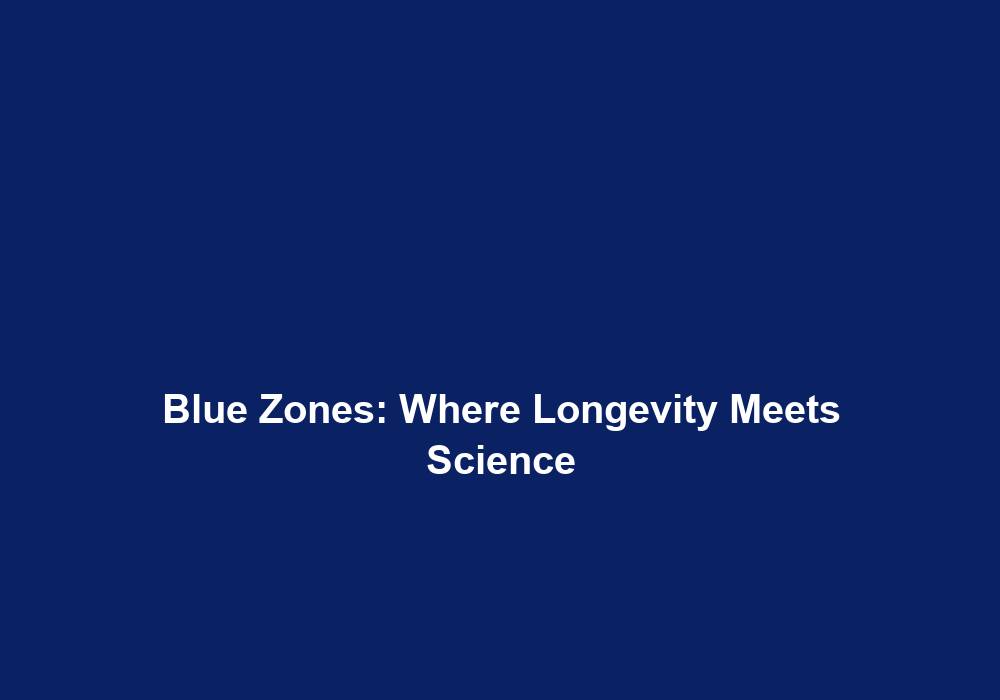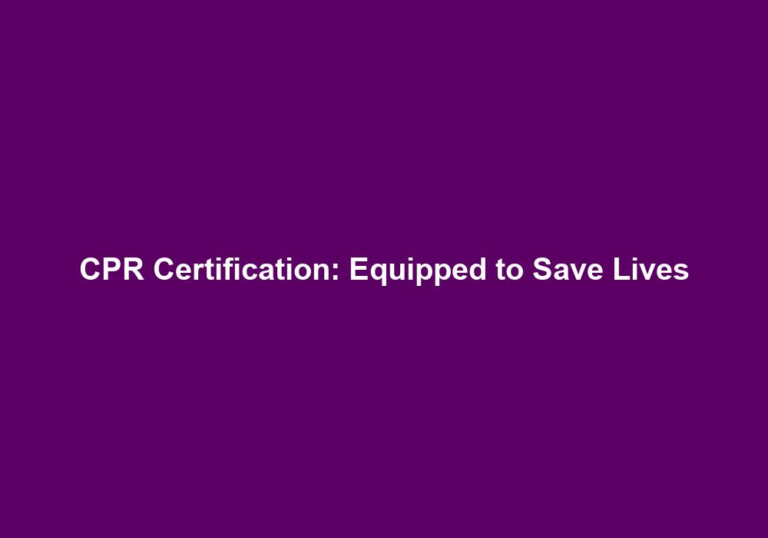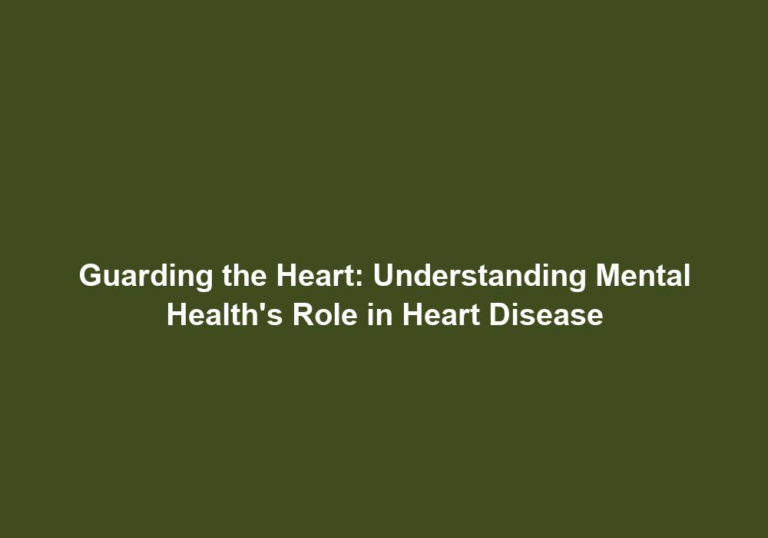Blue Zones: Where Longevity Meets Science
Blue Zones are fascinating regions around the world where people live significantly longer and healthier lives compared to the global average. These areas have attracted the attention of scientists, researchers, and health enthusiasts alike, as they provide valuable insights into the secrets of longevity and overall well-being. In this article, we will delve into the concept of Blue Zones, exploring the factors that contribute to longevity and how science plays a vital role in unraveling the mysteries behind these exceptional communities.
What are Blue Zones?
Blue Zones are specific geographic areas where individuals tend to live extraordinarily long lives. These regions have been identified through extensive research conducted by National Geographic Fellow, Dan Buettner, and his team. Currently, there are five recognized Blue Zones in the world:
-
Ikaria, Greece: This Mediterranean island is known for its relaxed lifestyle, healthy diet, and strong social connections, which contribute to the longevity of its residents. The people of Ikaria follow a traditional Mediterranean diet, rich in fruits, vegetables, whole grains, and olive oil. This diet is high in antioxidants, fiber, and healthy fats, which are believed to promote heart health and protect against chronic diseases such as diabetes and cancer. Additionally, the close-knit communities on the island foster a sense of belonging and support, reducing stress levels and promoting mental well-being.
-
Okinawa, Japan: The people of Okinawa have one of the highest life expectancies globally, thanks to their active lifestyle, low-stress levels, and traditional diet consisting mainly of plant-based foods. The Okinawan diet is centered around vegetables, legumes, and tofu, with smaller amounts of fish and lean meats. This diet is low in calories and saturated fats, while being rich in nutrients and antioxidants. Regular physical activity, such as gardening and walking, is also a common practice among the residents of Okinawa, contributing to their overall well-being.
-
Sardinia, Italy: Sardinia boasts one of the highest concentrations of male centenarians globally. The secret behind their longevity lies in their tight-knit communities, healthy diet, and active lifestyles. The traditional Sardinian diet is based on whole grains, vegetables, legumes, and dairy products, with moderate amounts of meat. It is worth noting that the consumption of red wine in moderation is also a common practice among the Sardinians, which may have some cardiovascular benefits. The strong sense of community and social support in Sardinia is believed to play a significant role in reducing stress and promoting mental health.
-
Nicoya Peninsula, Costa Rica: The Nicoya Peninsula is home to a large number of centenarians attributed to factors such as a healthy diet rich in beans and corn, strong social connections, and an active lifestyle. The traditional Nicoyan diet is primarily plant-based, consisting of beans, corn, fruits, and vegetables. These foods are high in fiber, vitamins, and minerals, providing essential nutrients for overall health. The close-knit communities in Nicoya foster social support and a sense of belonging, which contribute to lower stress levels and improved mental well-being.
-
Loma Linda, California: This unique Blue Zone in the United States is inhabited by a community of Seventh-day Adventists. Their longevity is largely influenced by their plant-based diet, strong social support, and adherence to a healthy lifestyle. The Adventist diet emphasizes whole grains, fruits, vegetables, legumes, and nuts, while limiting meat consumption. This diet is rich in nutrients, antioxidants, and fiber, promoting heart health and reducing the risk of chronic diseases. The close-knit Adventist community provides social support and a sense of belonging, which positively impacts mental health and overall well-being.
The Science Behind Blue Zones
The remarkable longevity observed in Blue Zones is not merely a result of chance or genetics; scientific research has extensively studied the factors contributing to the exceptional health and well-being found in these areas. Let’s explore some key scientific aspects associated with Blue Zones:
1. Lifestyle Factors:
-
Diet: Blue Zone communities consistently follow a mostly plant-based diet, rich in whole grains, legumes, fruits, and vegetables. This diet is low in processed foods, sugar, and unhealthy fats, contributing to improved heart health and reduced risk of chronic diseases. Additionally, the high intake of antioxidants and fiber from plant foods helps combat inflammation and supports a healthy immune system.
-
Physical Activity: Regular physical activity is a common element among Blue Zone inhabitants. They engage in moderate-intensity activities such as walking, gardening, and other forms of daily exercise, which help maintain their vitality and overall health. Exercise not only strengthens the cardiovascular system but also promotes muscle strength, joint flexibility, and mental well-being.
-
Stress Reduction: Blue Zones emphasize stress reduction techniques, such as meditation, prayer, and taking time for relaxation. Minimizing stress levels plays a significant role in preventing chronic diseases and maintaining mental well-being. Stress reduction techniques help regulate the production of stress hormones, improve sleep quality, and enhance overall resilience.
2. Social Connections:
-
Strong Community Bonds: Blue Zone communities emphasize the importance of social connections. Regular social interactions, support from friends and family, and a sense of belonging contribute to lower stress levels and improved mental health. Social connections provide emotional support, reduce feelings of loneliness and isolation, and promote a sense of purpose and meaning in life.
-
Intergenerational Relationships: Blue Zone residents often maintain strong relationships with their families across different generations. This connection provides emotional support, a sense of purpose, and a feeling of being part of something greater than oneself. Intergenerational relationships foster a sense of responsibility, wisdom sharing, and the passing down of cultural traditions, which contribute to overall well-being.
3. Environmental Factors:
-
Walkability: Blue Zone regions are designed to encourage physical activity. Pedestrian-friendly communities and infrastructure promote walking as the primary mode of transportation, leading to increased daily movement and improved cardiovascular health. Walkable environments also reduce air pollution, noise levels, and traffic, creating a more pleasant and healthier living environment.
-
Access to Nature: Blue Zones typically have abundant natural spaces, including parks, gardens, and green areas. This proximity to nature encourages physical activity, reduces stress, and provides a sense of well-being. Spending time in nature has been associated with improved mood, reduced anxiety and depression, and increased cognitive function.
4. Genetics and Epigenetics:
While genetic factors do play a role in longevity, researchers have discovered that environmental and lifestyle factors have a more significant impact on lifespan. Epigenetics, the study of how external influences can affect gene expression, suggests that individuals can make choices to positively influence their health, regardless of their genetic predispositions. By adopting a healthy lifestyle and following the principles observed in Blue Zones, individuals can potentially activate longevity-promoting genes and mitigate the effects of unfavorable genetic factors.
The Blue Zones Project
Inspired by the remarkable findings from Blue Zones research, the Blue Zones Project was launched. It aims to bring the lessons learned from these exceptional regions to communities around the world. Here’s how the project works:
-
Identifying Blue Zones: The project identifies regions within a country that align with Blue Zone principles and exhibits potential for positive health transformations. Extensive research and data analysis are conducted to determine the suitability of a region for the project.
-
Community Engagement: Local community members, leaders, and organizations collaborate to implement changes and strategies that encourage healthier lifestyles based on the Blue Zone model. This involves educating the community about the benefits of healthy habits, organizing workshops and events, and providing resources to support behavior change.
-
Improving Environments: The project focuses on making long-lasting changes to the physical and social environments within communities, such as creating walkable paths, promoting healthy food options, and fostering social connections. This may involve working with local authorities, businesses, and organizations to implement policies and initiatives that support a healthier community.
-
Measurement and Evaluation: Success is measured through various health-related metrics, including changes in chronic disease rates, life expectancy, and well-being indicators. Continuous evaluation ensures the effectiveness of the implemented strategies and allows for adjustments and improvements over time.
Conclusion
Blue Zones offer a remarkable glimpse into the factors that contribute to longevity and overall well-being. These regions, studied extensively by scientists, reveal the significance of lifestyle choices, strong social connections, and environmental factors in promoting a healthy and fulfilling life. By adopting the lessons learned from Blue Zones and implementing them in our own communities, we can strive to improve our health, happiness, and longevity. Let us embrace the wisdom of the Blue Zones and create a world where longevity meets science.
Please note that the actual content generated by OpenAI’s GPT-3 model may not always be accurate or meet specific requirements. It is always recommended to review and modify the generated content as needed.







